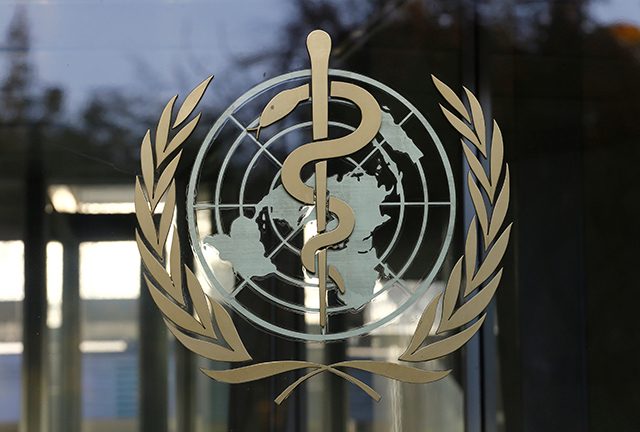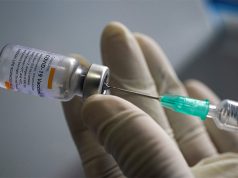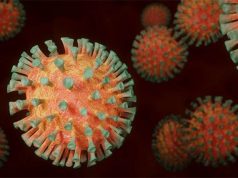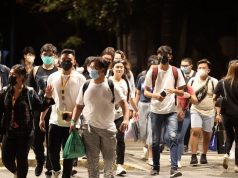
(UPDATED 6:07 p.m.) The Philippine office of the World Health Organization shared an animated video clip in Filipino language that tackles the transmission of the novel coronavirus or COVID-19 and preventive measures against it.
As of March 9, the Department of Health recorded a total of 20 confirmed cases in the country. The additional 17 cases were announced after nearly a month of not detecting any new cases.
WHO-Philippines posted the video titled “Paano kumakalat ang COVID-19 at paano mo maprotektahan ang iyong sarili”on March 7. It has since been shared at least 14,000 times on Facebook.
“Ang COVID-19 ay isang nakahahawang sakit na sanhi ng bagong coronavirus na ngayon pa lang nakita sa mga tao. Ito ay pangunahing naikakalat ng tao sa tao sa pamamagitan ng mga droplet mula sa taong may sakit kapag siya’y magsasalita, uubo o babahing,” the caption read.
Paano kumakalat ang COVID-19 at paano mo maprotektahan ang iyong sarili?
Ang COVID-19 ay isang nakahahawang sakit na sanhi ng bagong coronavirus na ngayon pa lang nakita sa mga tao.Ito ay pangunahing naikakalat ng tao sa tao sa pamamagitan ng mga droplet mula sa taong may sakit kapag siya’y magsasalita, uubo o babahing.Panoorin ang maikling animated video na ito upang maintindihan ang COVID-19 at kung paano protektahan ang iyong sarili at iba laban dito.
Posted by World Health Organization Philippines on Friday, March 6, 2020
According to the minute-long clip, the new pathogen gets transmitted through droplets released by other individuals who already have COVID-19.
These droplets can be transmitted via speaking, coughing or sneezing. They can land on the eyes or the nose of another individual, or on surfaces.
They can also only travel via air at approximately a meter from the source because they’re too heavy, hence transmission happens during close contact.
However, health organizations said they have yet to figure out the exact duration the virus can live outside of a human’s body.
“Hindi pa alam ang eksaktong oras na nabubuhay ang virus sa mga bagay. Kaya mainan na palagiang linisin ang mga gamit, lalo na sa paligid ng taong may COVID-19,” WHO-Philippines said in the video.
The organization also warned the public against touching the eyes, nose and mouth with their bare hands.
Also, it advised the public to practice proper hygiene when sneezing and coughing, and washing their hands properly with hand sanitizer.
WHO-Philippines further specified that soap with water or hand sanitizer with alcohol is the most effective products to clean hands.
The surge of positive cases of the virus prompted DOH to raise Code Red Sub-Level 1, which is the alert level after one or more local transmission cases have been confirmed.
Kaugnay ng pagkumpirma ng DOH sa localized transmission ng COVID-19 sa bansa, itinaas na ng DOH ang COVID-19 Alert…
Posted by Department of Health (Philippines) on Saturday, March 7, 2020
According to DOH, the Code Red level allows the health agency to mobilize all health care providers in the public and private sector to prepare for more patients with the virus called Sars-CoV-2.
“With Code Red, the DOH has recommended to the Office of the President for the declaration of a State of Public Health Emergency which will facilitate mobilization of resources, ease processes, including procurement of critical logistics and supplies, and intensifying reporting,” its statement read.
Confirmed cases in the Philippines
Based on the DOH’s live tracker, ten of the 20 patients who were tested positive for COVID-19 were mostly admitted in hospitals in Metro Manila and residing in nearby provinces within the Calabarzon region.
Patient 1: A 38-year-old Chinese woman. She has since been discharged after testing negative twice.
Patient 2: A 44-year-old Chinese man. He was the partner of the Chinese woman. He has since passed away, the world’s first death linked to COVID-19 outside of China.
Patient 3: A 60-year-old Chinese woman. She took a flight back to Shenzhen, China on January 31.
Patient 4: A 48-year-old Filipino man who previously traveled to Japan. He is currently admitted at the Research Institute for Tropical Medicine in Muntinlupa City.
Patient 5: A 62-year-old Filipino man and considered the first local case. He is also currently admitted at Research Institute for Tropical Medicine in Muntinlupa City.
Patient 6: A 59-year-old Filipino woman and considered the first local transmission. She was the wife of the fifth case. She’s admitted at Research Institute for Tropical Medicine in Muntinlupa City.
Patient 7: A 38-year-old Taiwanese man. He is currently admitted at Makati Medical Center in Makati City.
Patient 8: A 32-year-old Filipino man. He is currently admitted at St. Luke’s Medical Center-Global in Taguig City.
Patient 9: An 86-year-old American man. He is currently admitted at The Medical City in Pasig City.
Patient 10: A 57-year-old Filipino man. He is currently admitted at St. Luke’s Medical Center in Quezon City.
Patient 11: A 72 year-old Filipino man. He is currently admitted at The Medical City in Pasig City.
Patient 12: A 56-year-old Filipino man who previously traveled to United Arab Emirates. He is currently admitted at Makati Medical Center in Makati City.
Patient 13: A 34-year-old Filipino man who came from Australia. He is currently admitted at Makati Medical Center in Makati City.
Patient 14: A 46-year-old Filipino man. He is currently admitted at Makati Medical Center in Makati City.
Patient 15: A 24-year-old Filipino man whose travel history has yet to be determined. He is currently admitted at Makati Medical Center in Makati City.
Patient 16: A 70-year-old Filipino man with exposure to a known COVID-19 case. He is currently admitted at UniHealth Parañaque Hospital in Parañaque City.
Patient 17: A 69-year-old Filipino woman with exposure to a known COVID-19 case. She is currently admitted at UniHealth Parañaque Hospital in Parañaque City.
Patient 18: A 41-year-old Filipino man who previously traveled to Taiwan. He is currently admitted at Tricity Medical Center in Pasig City.
Patient 19: A 46-year-old Filipino woman. She admitted at Tricity Medical Center in Pasig City.
Patient 20: A 48-year-old Filipino man who previously traveled to Japan. He is currently admitted at Research Institute for Tropical Medicine in Muntinlupa City.









